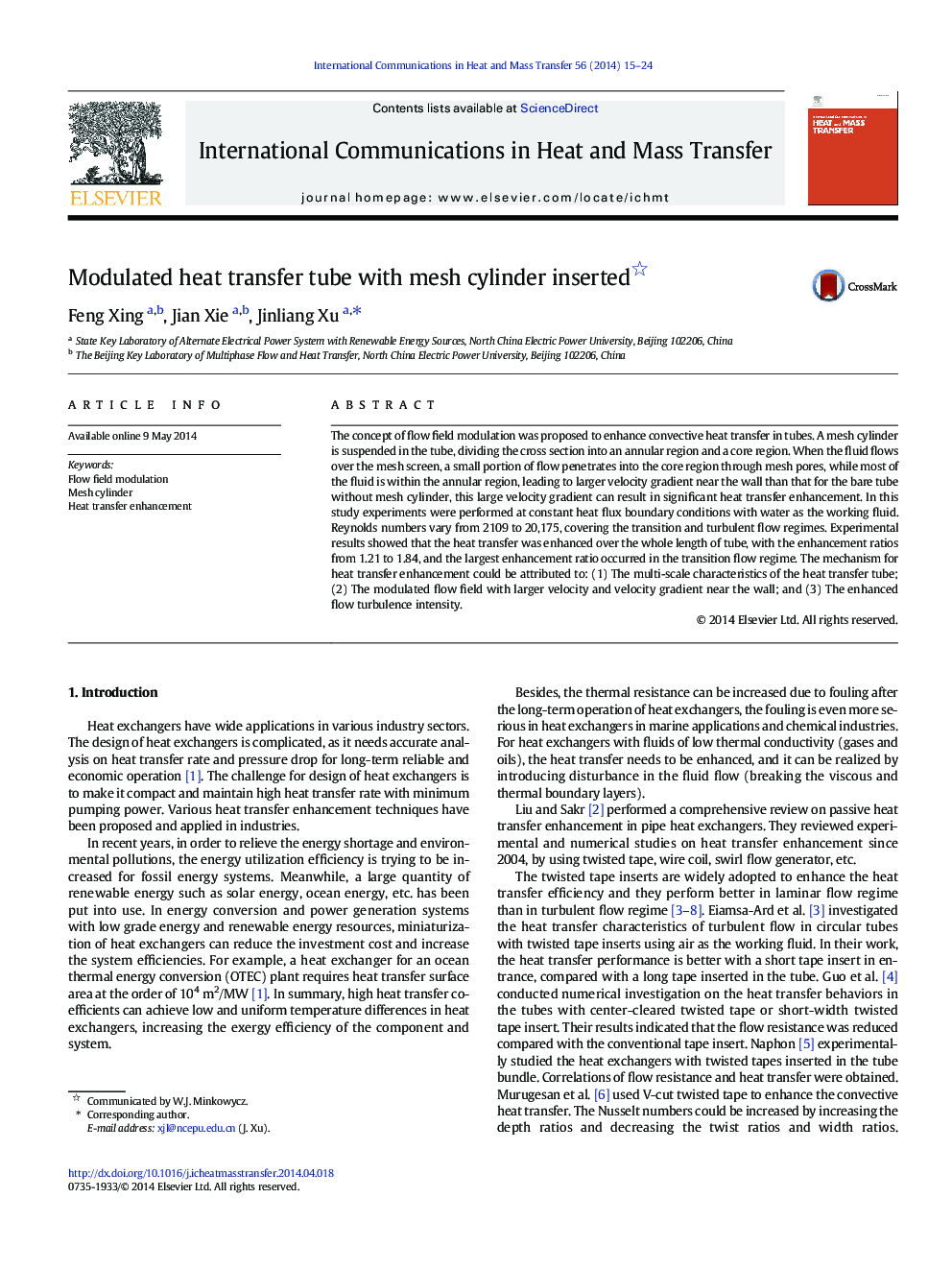| Article ID | Journal | Published Year | Pages | File Type |
|---|---|---|---|---|
| 653224 | International Communications in Heat and Mass Transfer | 2014 | 10 Pages |
The concept of flow field modulation was proposed to enhance convective heat transfer in tubes. A mesh cylinder is suspended in the tube, dividing the cross section into an annular region and a core region. When the fluid flows over the mesh screen, a small portion of flow penetrates into the core region through mesh pores, while most of the fluid is within the annular region, leading to larger velocity gradient near the wall than that for the bare tube without mesh cylinder, this large velocity gradient can result in significant heat transfer enhancement. In this study experiments were performed at constant heat flux boundary conditions with water as the working fluid. Reynolds numbers vary from 2109 to 20,175, covering the transition and turbulent flow regimes. Experimental results showed that the heat transfer was enhanced over the whole length of tube, with the enhancement ratios from 1.21 to 1.84, and the largest enhancement ratio occurred in the transition flow regime. The mechanism for heat transfer enhancement could be attributed to: (1) The multi-scale characteristics of the heat transfer tube; (2) The modulated flow field with larger velocity and velocity gradient near the wall; and (3) The enhanced flow turbulence intensity.
